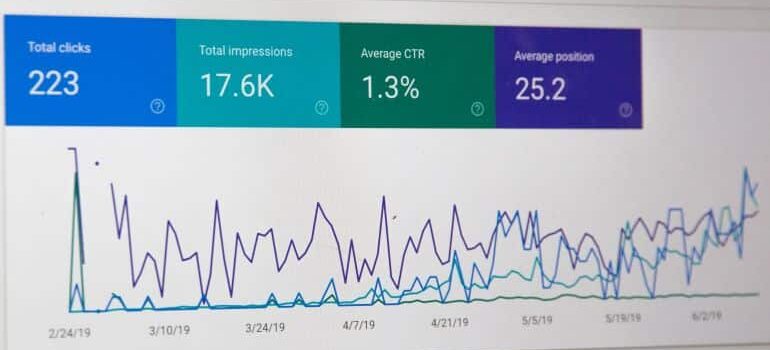Even the most successful agencies who handle digital marketing for movers have this problem. Searching for your website on Google reveals that some of the pages you wanted to remain private or hidden have been indexed. Content that is out of date, redundant, or contains sensitive or private information could fall into this category. But take a deep breath and stop panicking. Even though it’s not always possible to remove all unwanted content, there are still SEO-friendly ways to help you get rid of most of it. That’s the best way to protect your brand’s name and reputation and in this article, you’ll find out how to do this.
SEO-friendly tips to help you remove unwanted content
As a business owner, you naturally aspire for your website to reach the top of search engine results pages. For that reason, you’ve probably found different ways to advertise a business and take advantage of SEO. However, in reality, a simple Google search may reveal content you would rather keep hidden from your target audience. Whether it’s an outdated blog post or a page that contains sensitive information, the last thing you should do is stress and panic.

The good news is that it is rather simple to eliminate certain types of content from Google’s search results. In fact, even if you are a complete beginner, you’ll find this process pretty straightforward and easy.
Remove content that you control
Content that you own and manage is the simplest to remove from search results. All of your web-based presence’s many forms of material are included here. Here are the best SEO-friendly ways to remove unwanted content that is published and managed by you.
#1 Delete unwanted webpages

The first and the easiest way to remove unwanted content is to delete pages you no longer want to see. Depending on the content management system you use, the procedure may appear slightly different. For this post, we’ll take WordPress as an example because it’s the most popular choice among website owners:
- Log into the WordPress dashboard using your admin credentials.
- Hover a mouse over a page or blog post you want to delete.
- Click on “Trash” and you’re done.
Deleted web pages can be retrieved from the Trash folder. In addition, if you desire, you can permanently erase the page from the trash bin.
#2 Block specific URL from Google results
You might think that now that you’ve deleted a specific page all the work is done. However, you’re wrong because the web page was already indexed by Google and is probably linked to other pages on your site or externally. So when you delete a page, crawlers, including Google, will mark it as absent. As a result, the remaining material will suffer in terms of SEO and overall rating. That’s why you need to use another SEO-friendly method to remove this piece of unwanted content.
Google offers a simple solution to this problem in the form of The Google Remove URLs Tool. Here’s how to use it:
- Make your way to Google Search Console.
- Choose Temporary Removals from the menu.
- Select a New Request.
- Select Remove URL temporarily.
- When you’re done, click the Next button to finish the process.
After deleting the page, this procedure will permanently erase the URL from Google search results. If you only wish to remove the page from search results for a short period of time, you can choose not to delete it. Instead, you can choose for it to be hidden from Google’s search results for six months. You’ll have plenty of time to consider whether or not you want to permanently delete it.
#3 Remove related social media posts
You’re not alone if you use your personal or business social media accounts to promote the material you create. As soon as you submit new content, this is one of the finest ways to notify those who are interested in what you have to say.
Any associated social media posts should also be removed if you decide to remove a blog post or webpage from the internet for whatever reason. When someone types in “YouTube,” for example, Google will offer results. Removing content from the original website, but leaving a related YouTube post open, could leave some individuals able to find it. Your Facebook and Twitter posts may also be archived by Google and appear in search results if you don’t get rid of them.
Remove unwanted content that you have no control over

Disabling Google’s indexation of your web pages and content is straightforward. However, when the content you want to remove doesn’t belong to you, the situation gets that much more complicated. Luckily, there are plenty of professionals out that offer this type of service and more. From providing you with a thorough website marketing analysis to helping you get third-party sites to remove unwanted content, they will ensure your potential customers only see what you want them to see.
Alternatively, you can contact the webmaster and ask them to take down the unwanted content instead. If you ask nicely, webmasters may be ready to delete unwanted material from their sites. The website’s Contact page should have all of their information.
Final thoughts
As you can see, it’s not that difficult to remove unwanted content and do it in ways that are SEO-friendly. However, do keep in mind that some content is challenging, even impossible to remove from Google’s search results for various reasons. For instance, removing content about your moving company that comes from a different website can be rather hard. You might end up spending months going back and forth with the webmaster.
On the other hand, you won’t be able to get rid of information from government or law enforcement databases (e.g. the No Fly List). That’s why the best way to go is to invest your time and effort in SEO for moving companies and ensure that the content you have full control over is always up to date.






